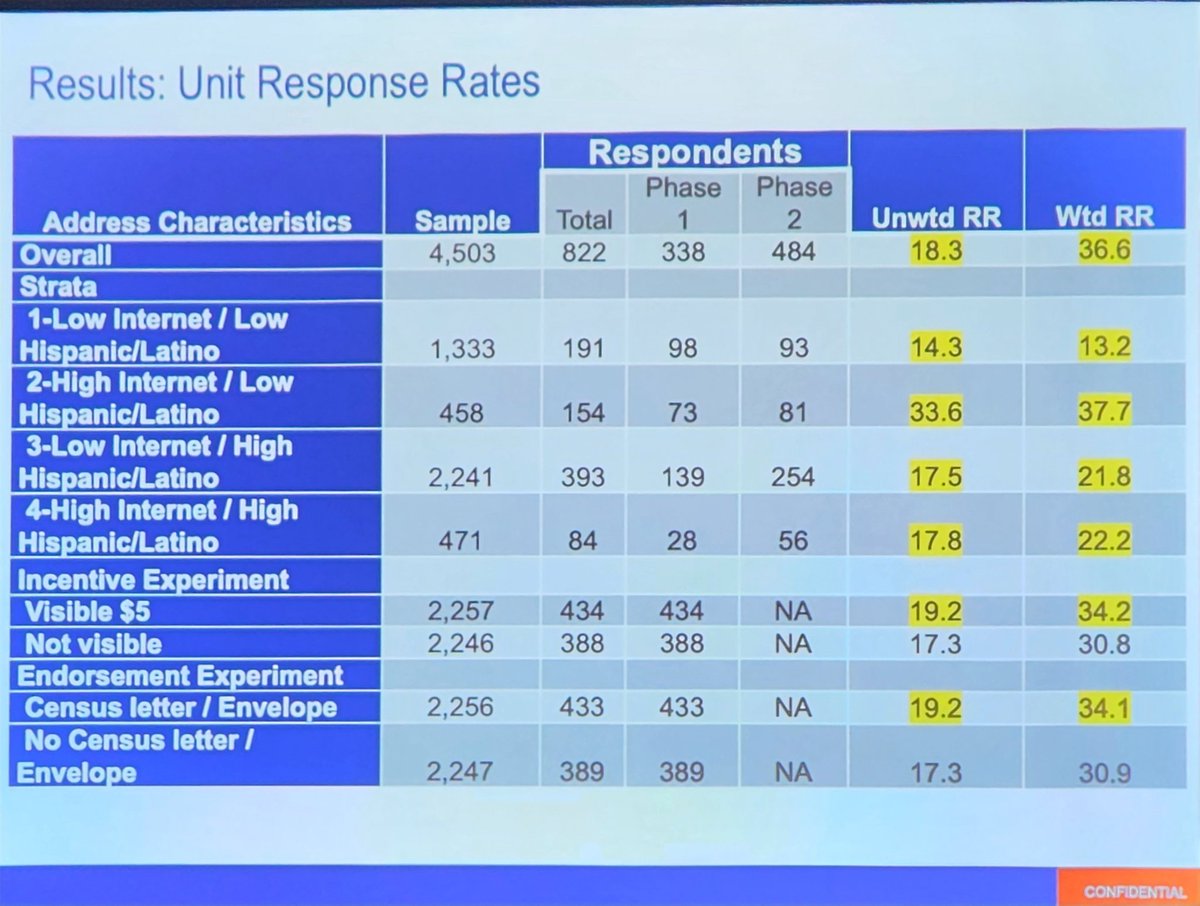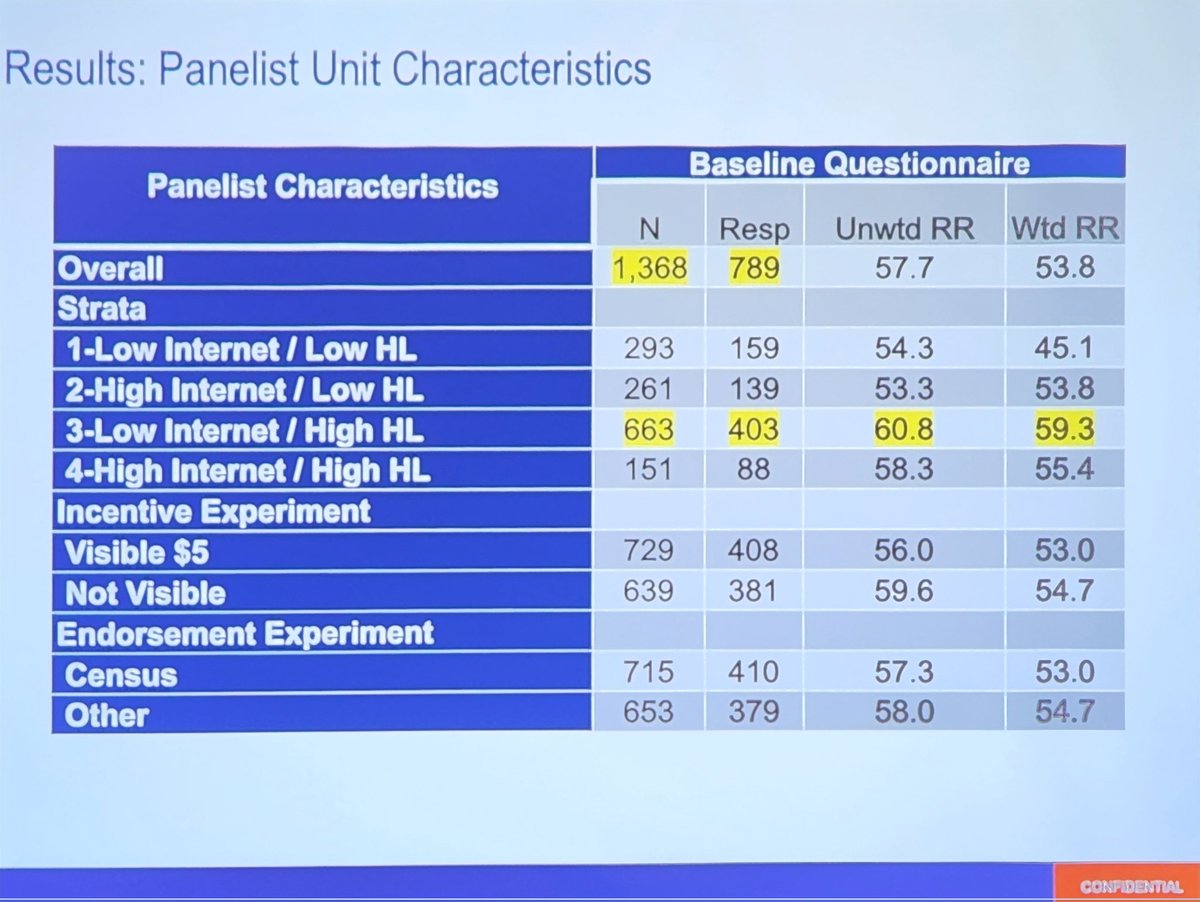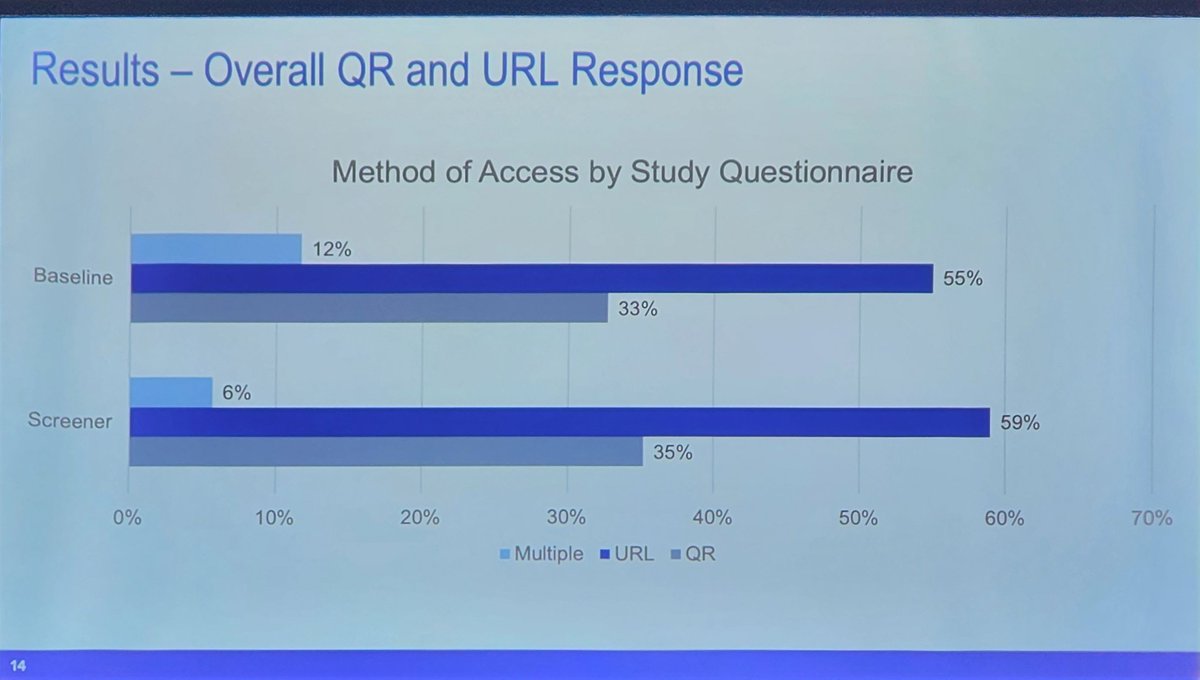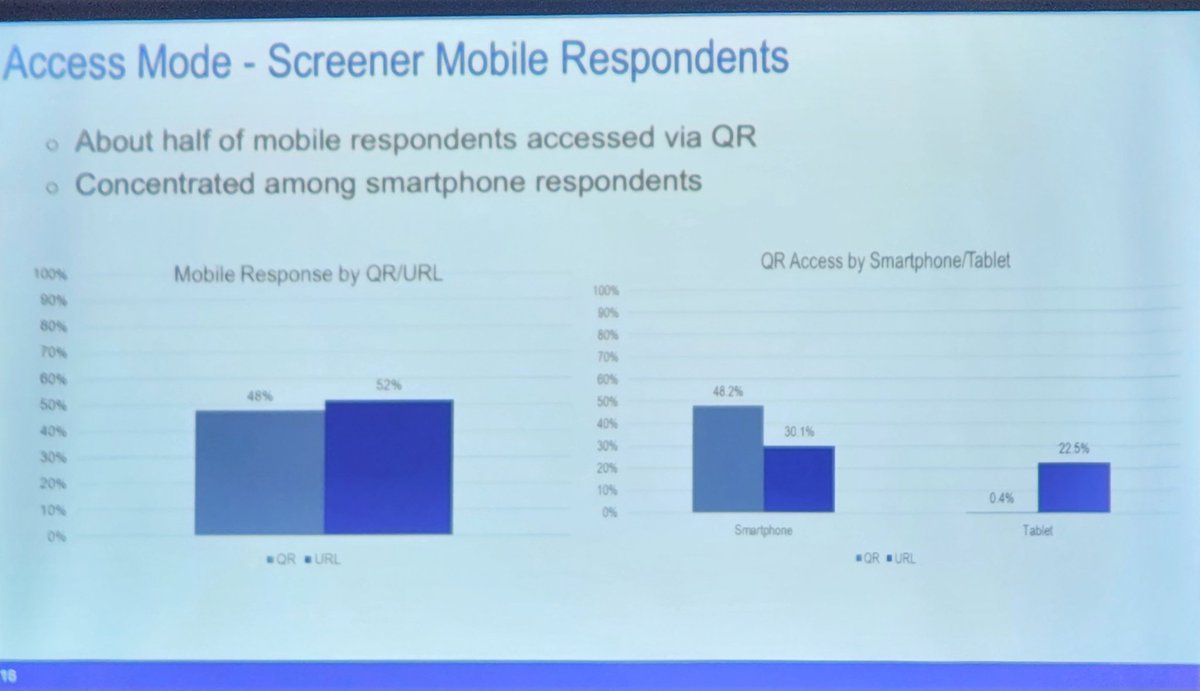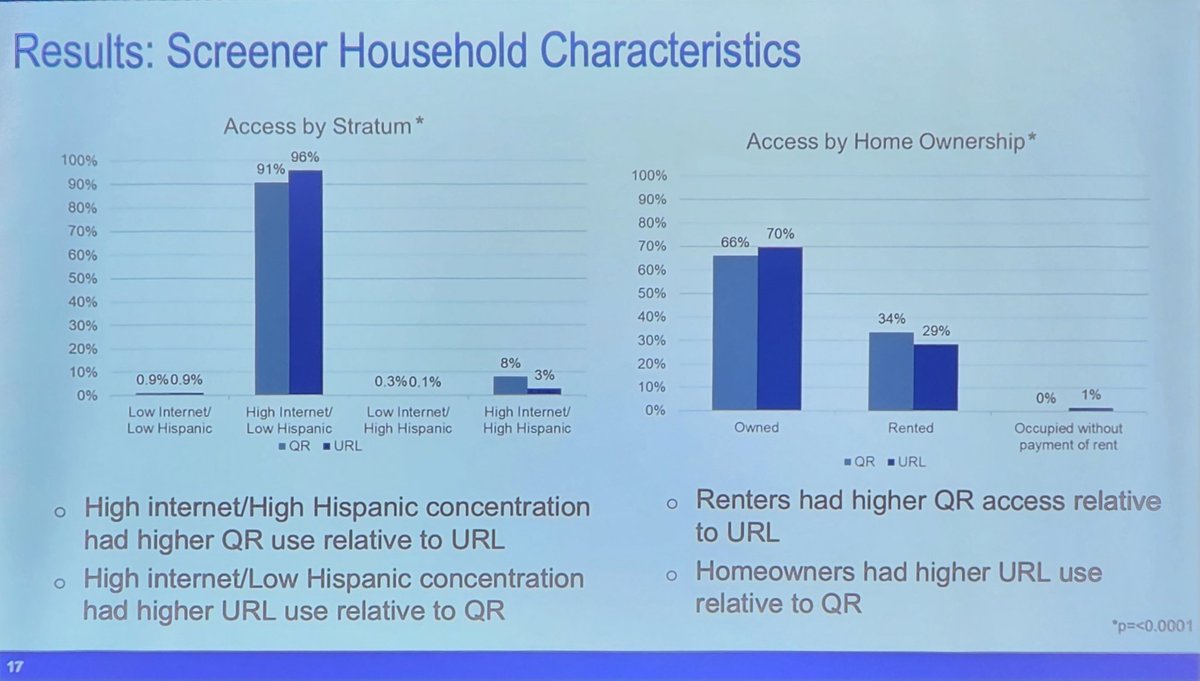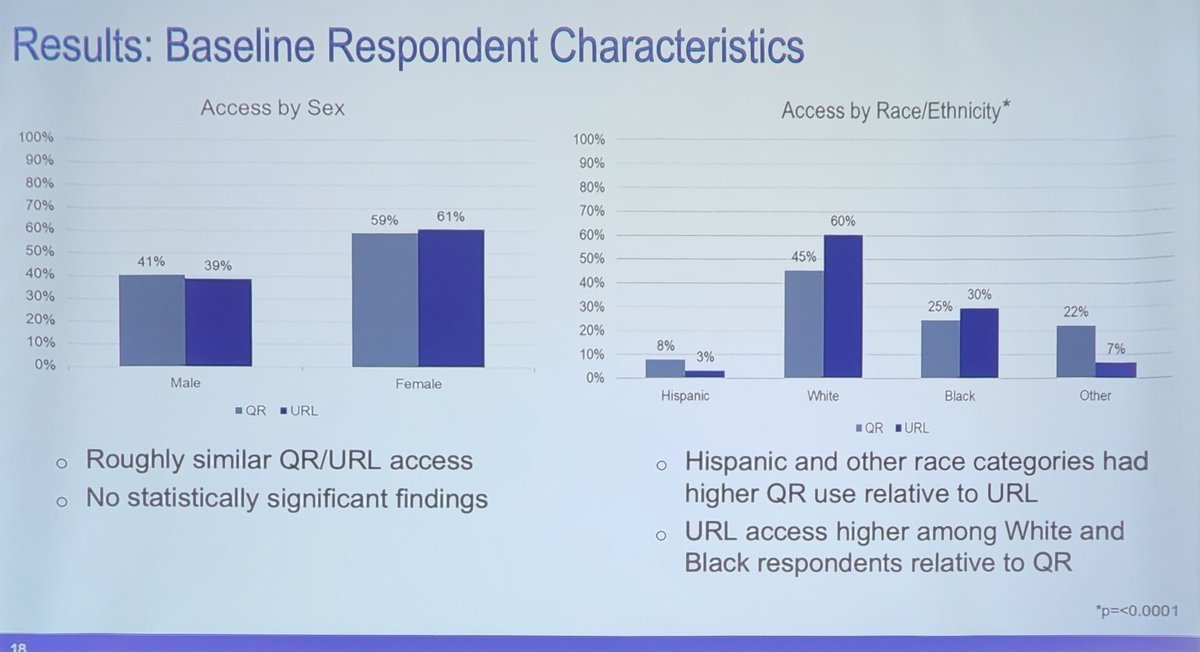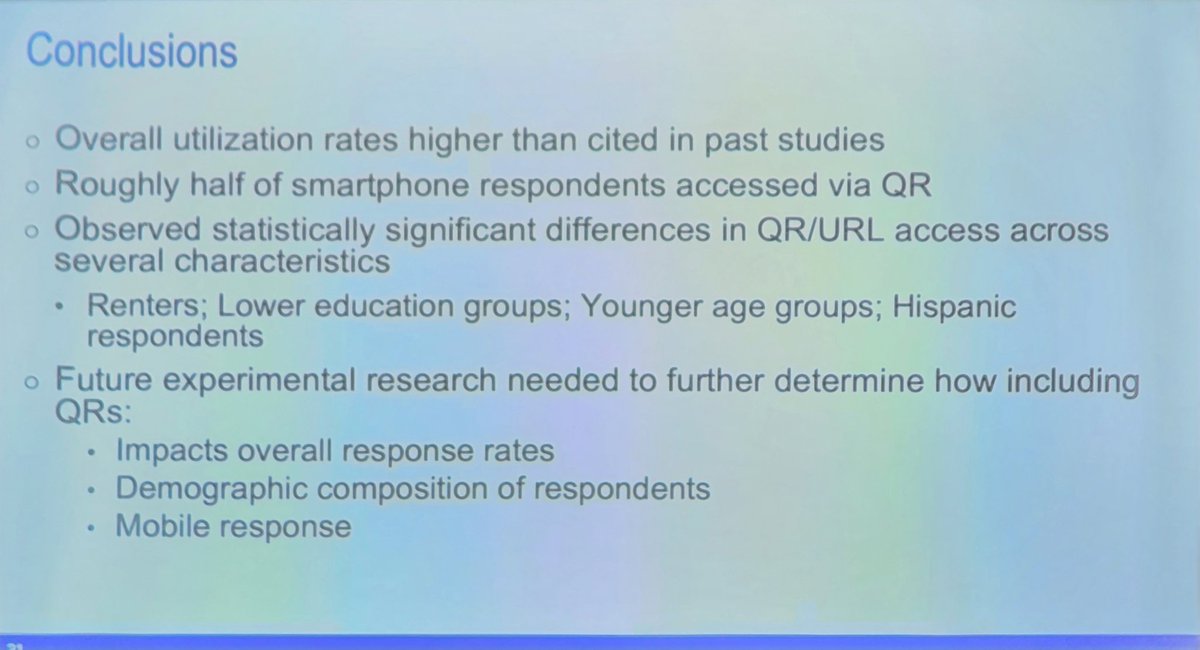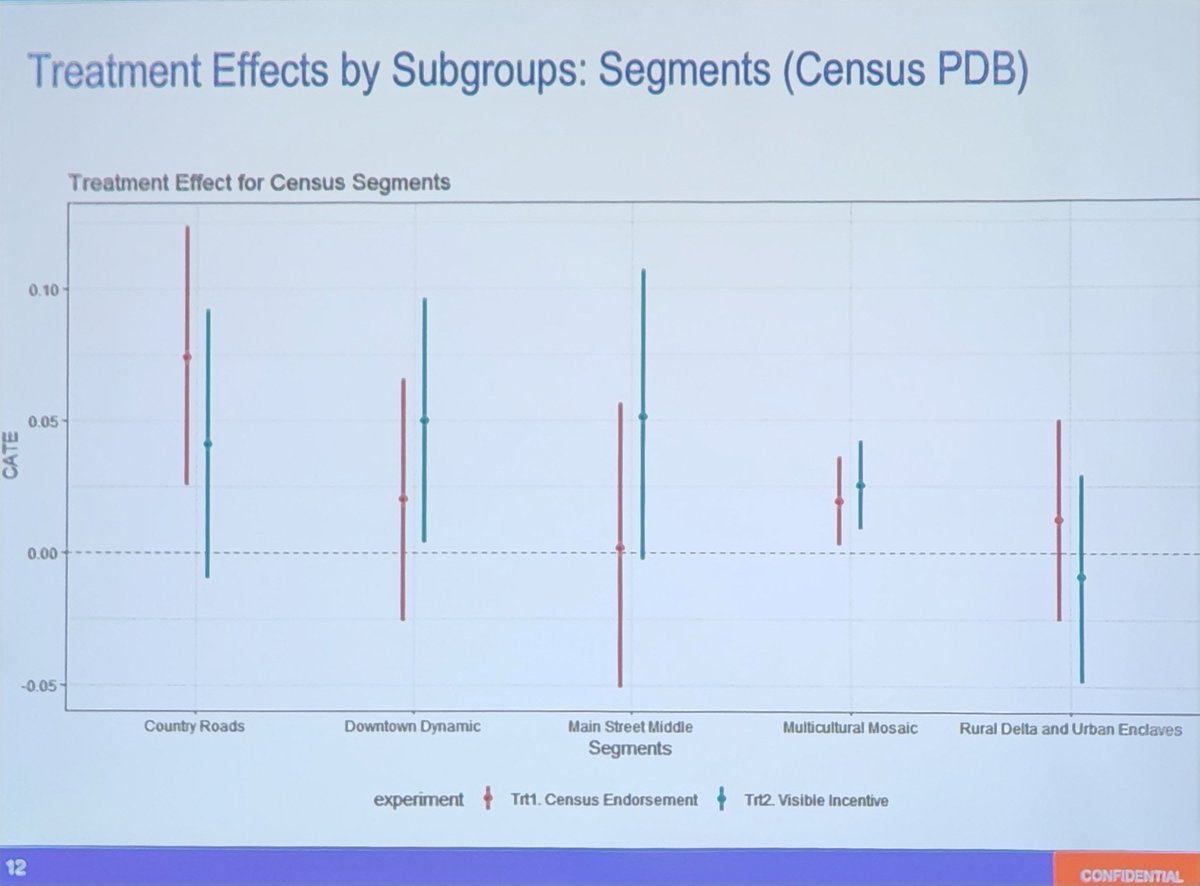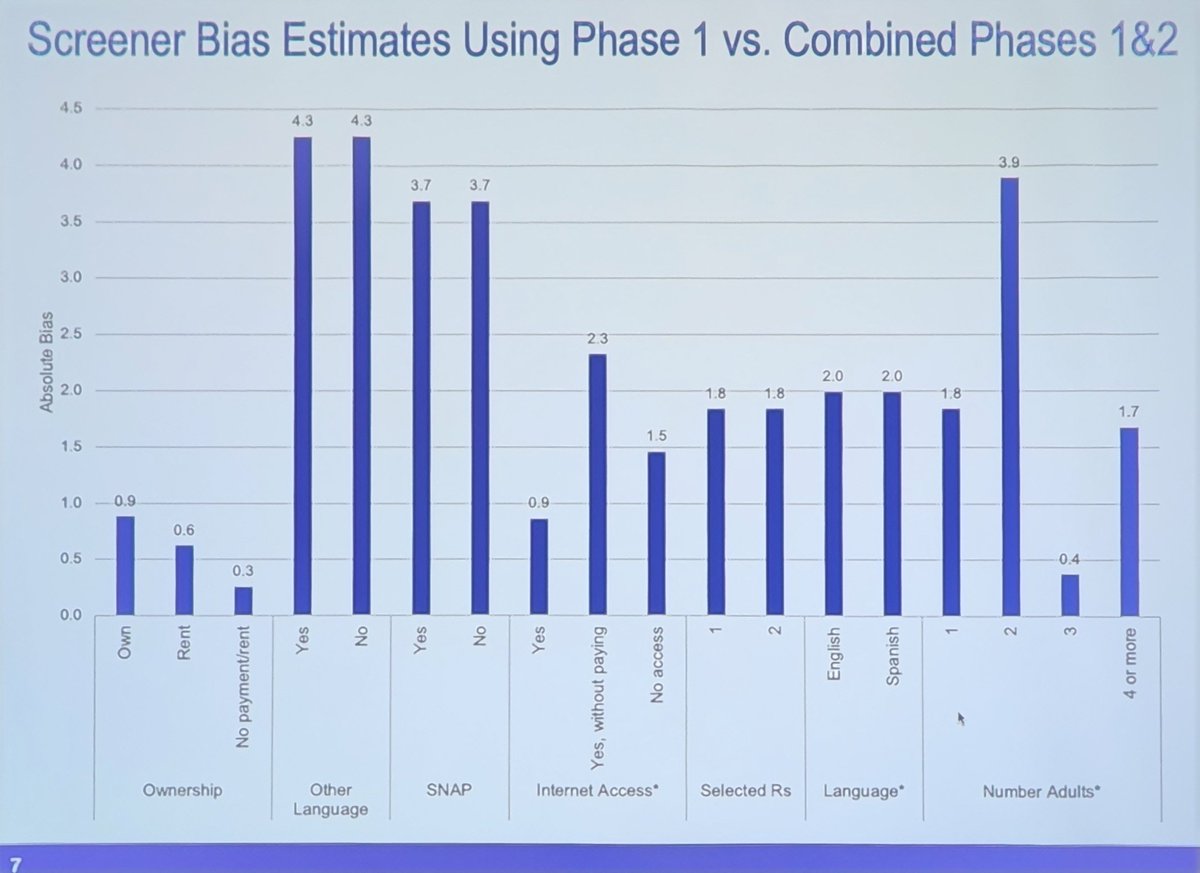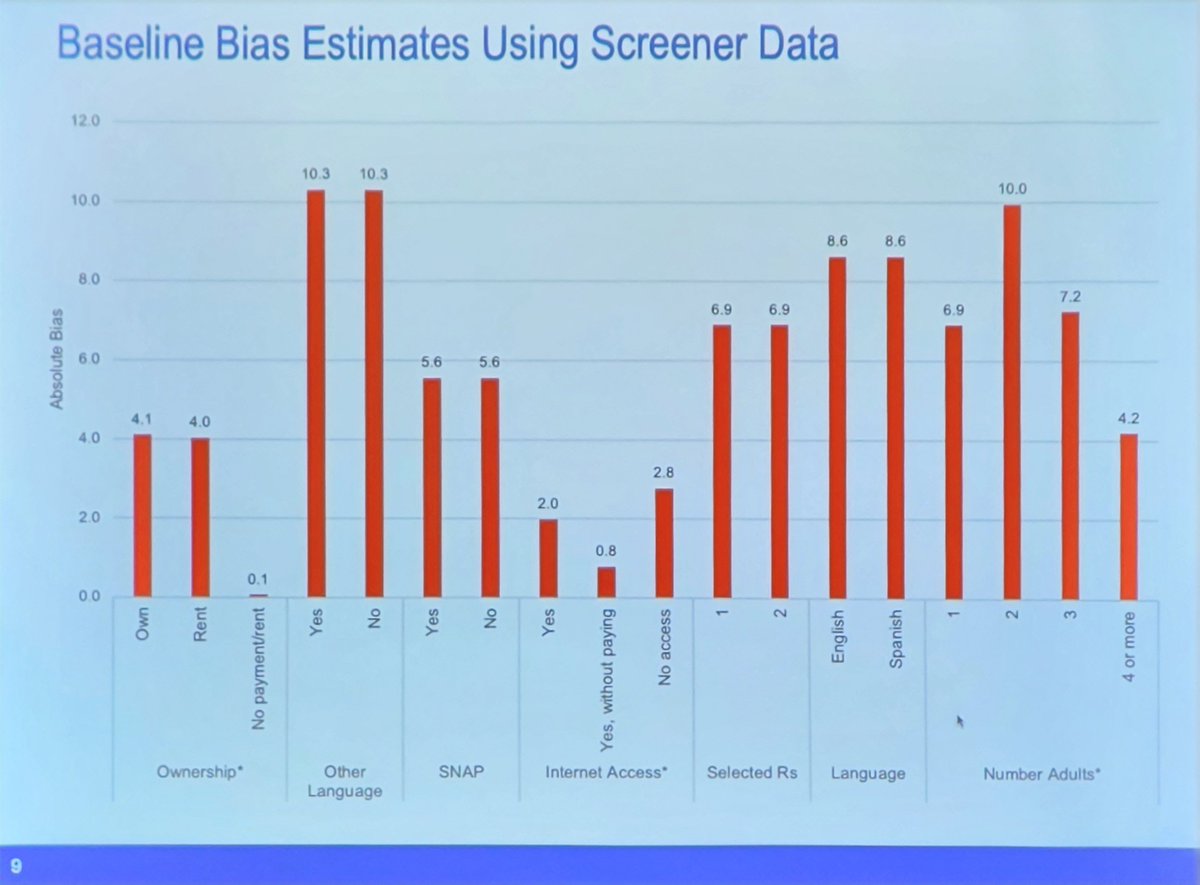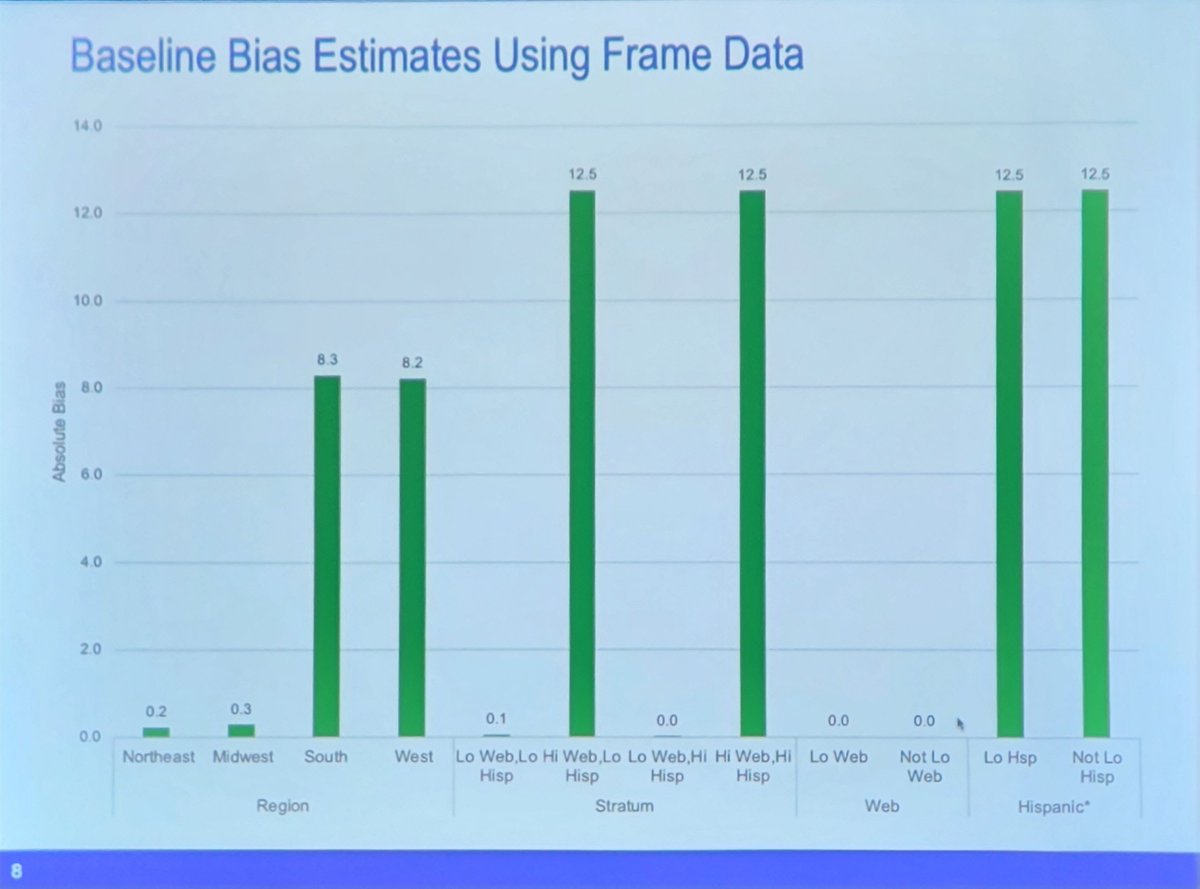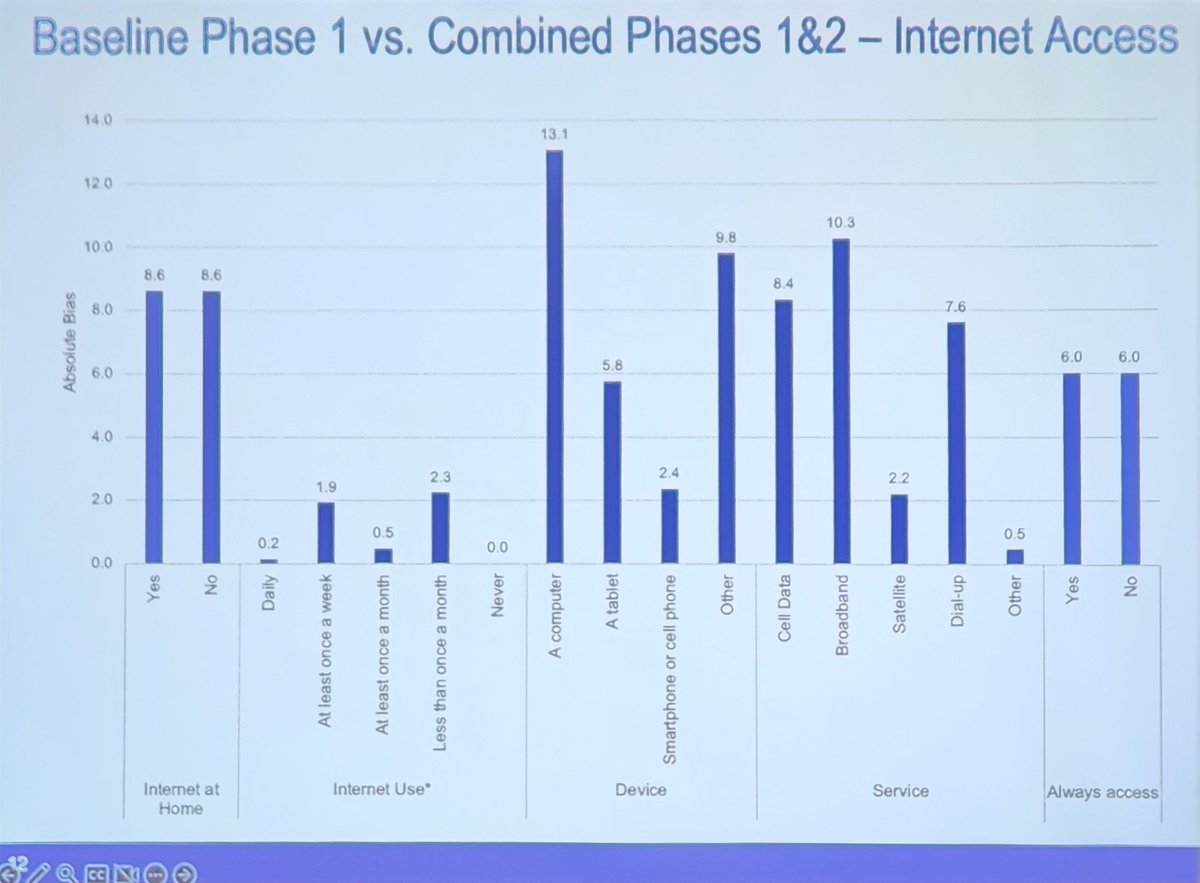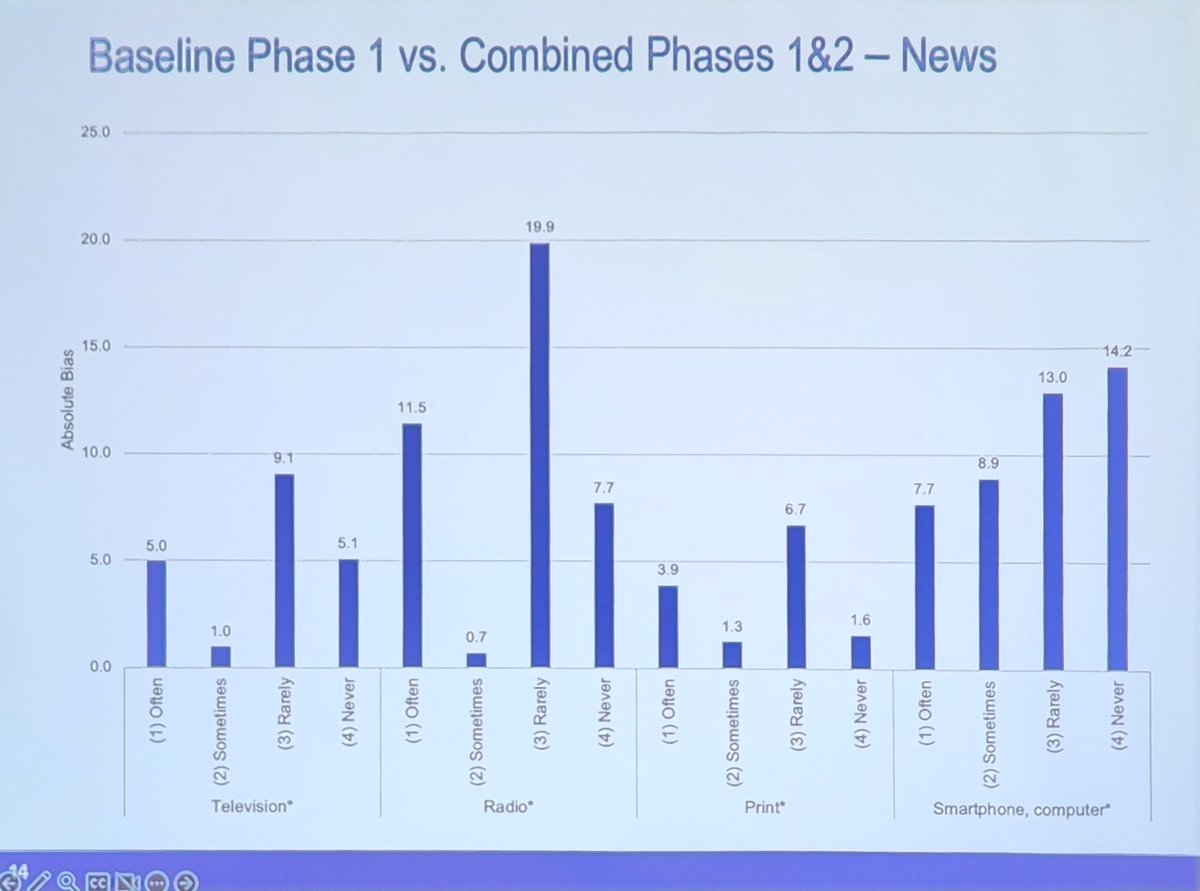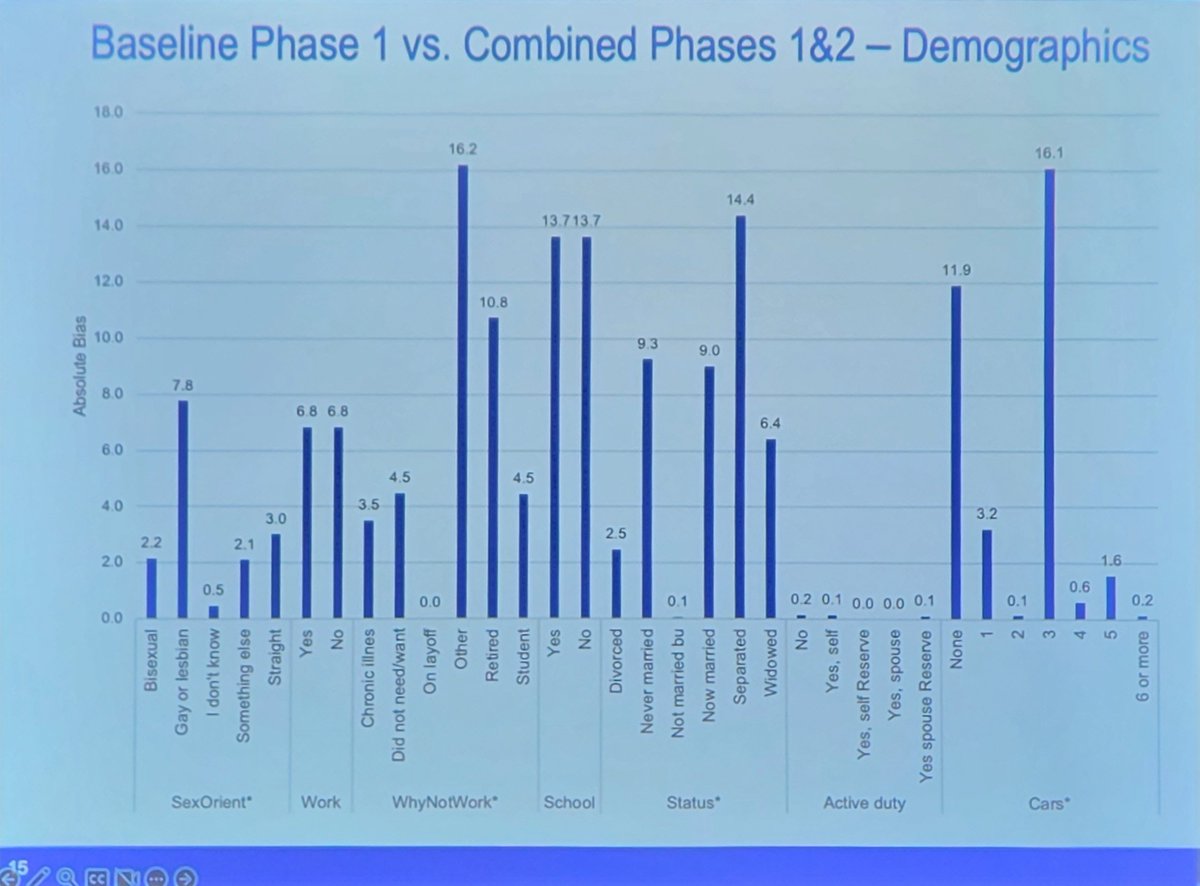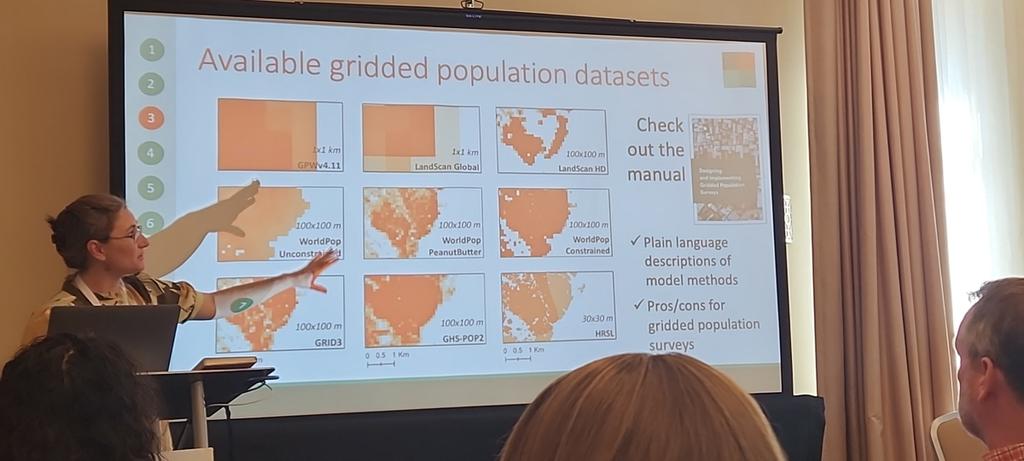Live tweeting the #AAPOR session The Panel on the Panel: Development and Testing of a Probability-Based, Nationally-Representative Survey Panel for Federal Use
First is Victoria Dounoucus (RTI) presenting Qualitative Work to Inform Contact Materials and Baseline Questions for the Ask U.S. Panel Pilot 

Cognitive interview in Microsoft Teams for ~1 hour, with 30 interview (21 in English, 9 in Spanish)
First they tested the logo.
Winner logo was #4:
They like the US map and how the check mark indicated action
Winner logo was #4:
They like the US map and how the check mark indicated action
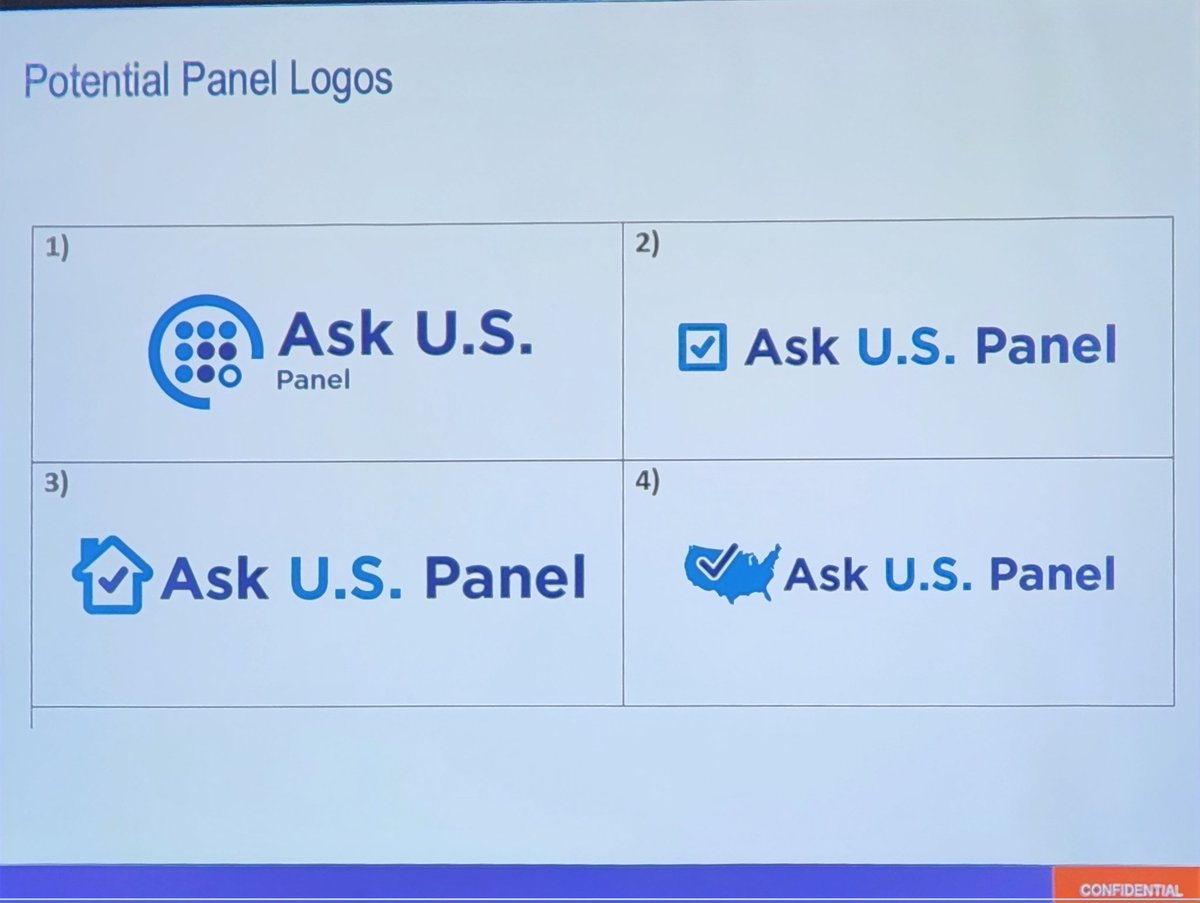
Asked their understanding of "panel"
They understood was a selected sample for a survey, but did not mention participating in the survey over repeated times
They understood was a selected sample for a survey, but did not mention participating in the survey over repeated times
When asked again after receiving some information about the panel the understanding continues the same.
Action: Including the expression "over time" in the invitation letter to clarify that.
Action: Including the expression "over time" in the invitation letter to clarify that.
Next presenter is Dustin Williams (RTI) presenting Methods and Experimental Evaluation of Strategies for Online Panel Recruitment 

Respondents with no internet were provided a tablet with a paid internet plan.
4 of 53 respondents that were provided a table completed the topical survey and none completed the final survey 😱😅
4 of 53 respondents that were provided a table completed the topical survey and none completed the final survey 😱😅
Next is Amanda Smith (RTI) talking about Just Scan It: The Effectiveness of Including QR Codes in Panel Recruitment Materials 

Why QR codes?
Reduce burden and mitigate error in typing URLs
Reduce burden and mitigate error in typing URLs
Pre-COVID: QR codes were not very often used
Post-COVID: QR are everywhere! (Seriously! Can we just stop using QR codes for menu restaurants? 😛
Post-COVID: QR are everywhere! (Seriously! Can we just stop using QR codes for menu restaurants? 😛
Two mechanisms to acess web survey:
1) QR code
2) URL
Note: taking this pic was a bit difficult because my phone kept trying to read the QR code 😂
1) QR code
2) URL
Note: taking this pic was a bit difficult because my phone kept trying to read the QR code 😂
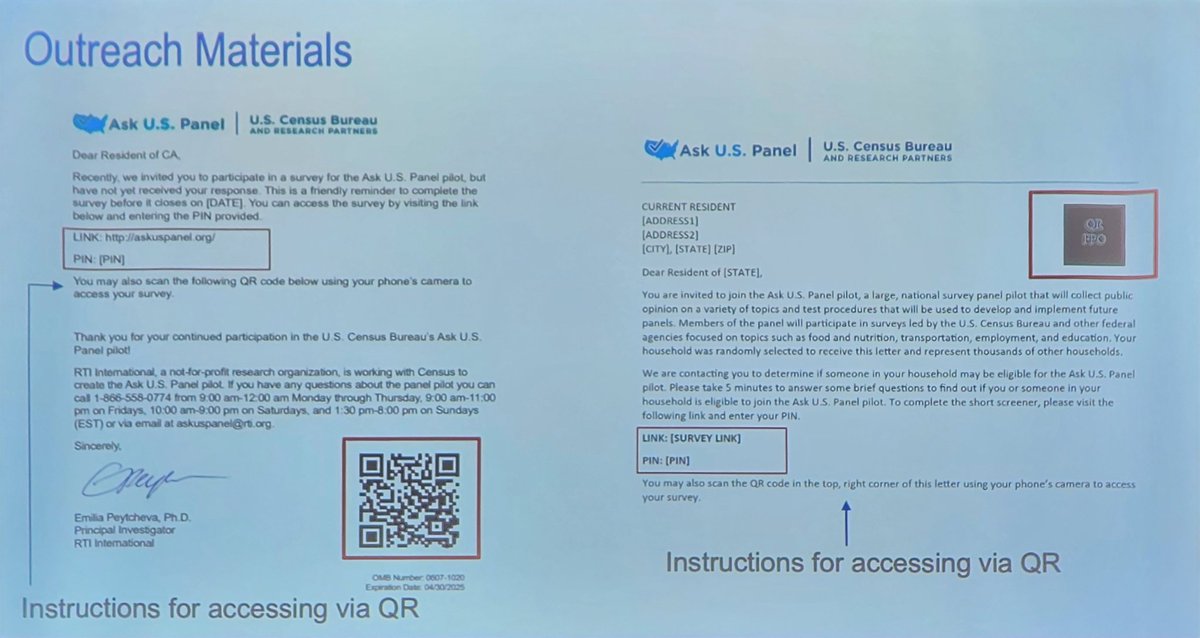
Next is Carlos Macuada (RTI) talking about Tailoring Materials to Respondents: Heterogeneous Treatment Effects in Survey Experiments 

To tailor the survey materials we need to have a good understanding of the population.
Are there differences across different subgroups with respect to certain design features?
Used BART to answer this question.
Used BART to answer this question.
Next and last presenter of the session is Emilia Peytcheva (RTI) presenting Evaluation of Nonresponse Bias in the Ask U.S. Panel Pilot 
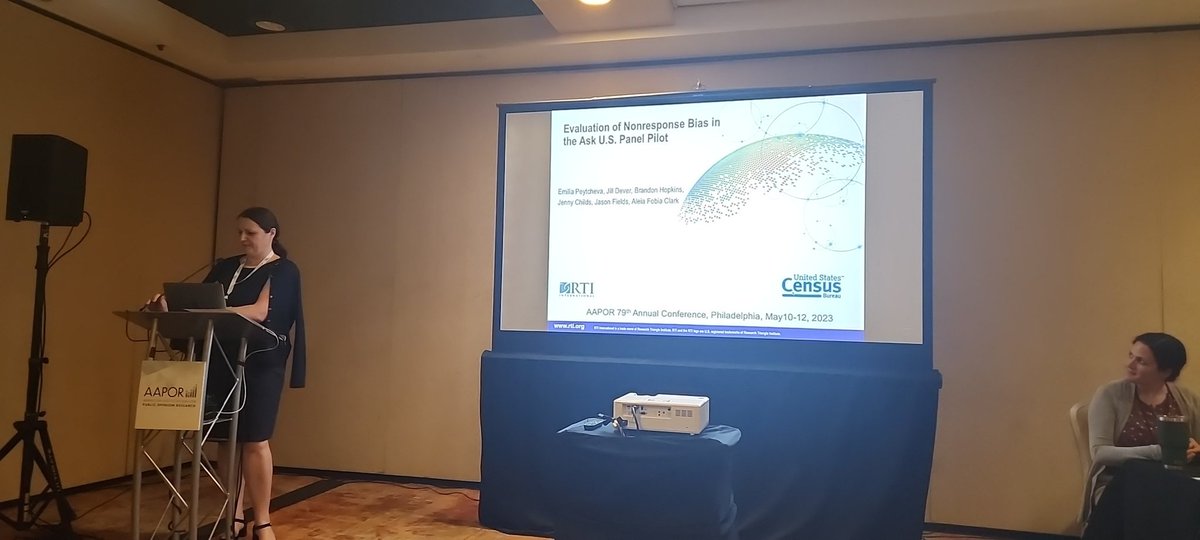
Focus on nonresponse bias at receuitment
Two-phase design with subsampling for nonresponse:
* Face-to-face
* Additional $5 incentive
* Provide tables
Two-phase design with subsampling for nonresponse:
* Face-to-face
* Additional $5 incentive
* Provide tables
Weighted screening response rates:
Phase 1: 14%
Overall (Phase 1 + Phase 2): 37%
Phase 1: 14%
Overall (Phase 1 + Phase 2): 37%
Examined 298 estimates
14% of them found significant "bias"
14% of them found significant "bias"
That's a wrap! Great session about how Census is working in building a national panel!
/TheEnd
/TheEnd
@threadreaderapp compile unroll thread
• • •
Missing some Tweet in this thread? You can try to
force a refresh

 Read on Twitter
Read on Twitter


